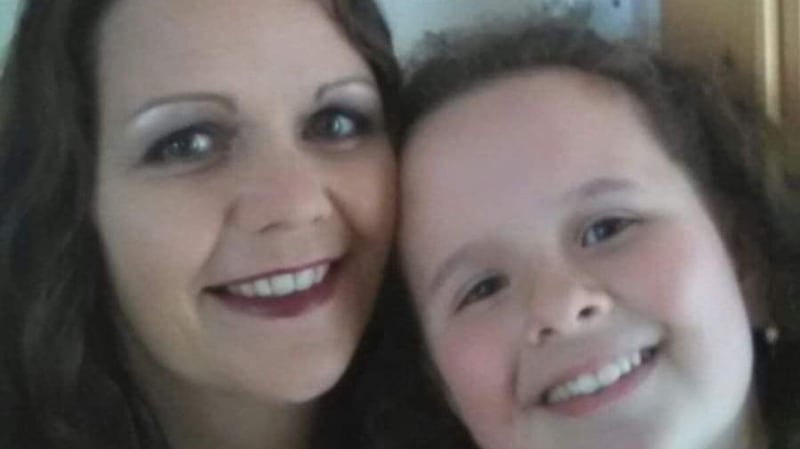Seeing a child have an epileptic seizure for the first time can be very scary and one of the most important things parents must learn is to stay calm. So says South-African born former rugby professional Brendan (BJ) Botha whose son, Owen (8), was diagnosed with epilepsy two years ago.
“It takes time to get accustomed to seeing your child have a seizure. However, you learn that the best way to respond to seizures as a parent is to be calm and relaxed,” says the former Munster player, who is keen for teachers and school children to understand epilepsy better.
Owen Botha's seizures began as short so-called absence seizures, but progressed to a more complex refractory form of epilepsy, which don't always respond to medication. "He has a normal everyday life except for when he has a seizure. When he has a seizure, it's important just to leave him, lie him on his side and keep him safe," says Botha, ahead of International Epilepsy Day, which is on Monday, February 11th (for this year's theme, Epilepsy Ireland will focus on seizure awareness).
‘Strange sounds’
Mary Rowe’s daughter, Jodi (11) had her first seizures when she was eight. “They were always in the middle of the night when she was falling asleep or coming out of sleep. She made strange sounds and her tongue went back in her mouth,” says Rowe.

Jodi's seizures were diagnosed following a two-week stay in Our Lady's Children's Hospital, Crumlin. "Once we got the diagnosis – of benign rolandic epilepsy – and got the medication, we knew what we were dealing with," says Rowe, who then did parents' training with Epilepsy Ireland to understand triggers, medication and how to record and manage her daughter's seizures.
Prof Amre Shanwan, consultant clinical neurophysiologist and epileptologist at Temple Street children's hospital, says managing children while they are in a seizure and getting the right dose of medication so that the child's cognitive development isn't unduly affected are what's most important for parents.
Rowe says that Jodi was seizure-free on medication for two years and then she got two seizures out of the blue. “Her medication was changed and now she has been another two years without seizures. But her concentration levels have dropped noticeably which causes frustration in school.”
Managing it
Keen for Jodi's school to understand epilepsy, Mary Rowe organised a speaker from Epilepsy Ireland to come talk to the children and teachers. "It was a playful session so the children weren't fearful. The speaker talked about what happens when a child gets a seizure in class and how to manage it. It was so reassuring," she says. One special needs assistant in Jodi's school went on to do seizure-management training. Rowe also organised for the staff at the local leisure centre to have training in epilepsy management.
Prof Shanwan says that when a child is having a seizure, it’s important not to change his/her position. “You can remove anything sharp, put a coat around them or have people close to them. But, don’t force a child into the recovery position in the middle of a convulsion. Don’t put anything in their mouth but make sure they are breathing. Putting the child on his/her side [the recovery position] is important to prevent the airways from collapsing,” says Prof Shanwan.
Medication
Emergency medication is given when a child has a seizure lasting more than five minutes. “We advise parents to get the medication ready at 3-4 minutes and then squirt it into the mouth towards the cheek. It is activated without swallowing. This emergency medicine is specifically for convulsive seizures [generalised tonic/clonic seizures] and shouldn’t be used for absence seizures [where there is no flaying of the body]. We feel it is a little overused sometimes,” says Prof. Shanwan.
There are several different medicines used to prevent epileptic seizures and Prof Shanwan says choosing the correct dosage is a balance between reasonable seizure control to salvage cognition and not too much medication so as the child’s concentration isn’t affected too badly. “The aim of medication is to keep the child wakeful, alert, able to learn and safe. I tend to involve parents in treatment decisions,” he says.
Triggers
Brendan Botha says that getting the right medications in the correct dosage is the tough part for Owen. "He can be seizure-free for three to four weeks and then suddenly, the seizures start again. You learn about the medications, some of which have severe side effects. It's all about protecting him when he's having his seizures and helping him lead a normal life," he says.
In terms of triggers, Prof Shanwan says that the biggest provoker of seizures is sleep deprivation. “It’s important for children to get enough sleep. Also, when children reach their teens, we explain to them that alcohol is a trigger. The seizure does not happen during the time alcohol is taken, it happens when the alcohol is leaving the body in what’s called alcohol-withdrawal seizures.”
Sport
Nowadays, children who have epileptic seizures are encouraged to do sport, unlike in the past when they were even discouraged from doing physical education in school. “We encourage sport because it gives a natural release of chemicals in the body and it’s good for the child’s confidence,” says Prof Shanwan. “It’s about normalising life and taking the stigma away. The only sport that a child can’t do without supervision is swimming, for fear of drowning. When there is a lifeguard or other adult there who knows the child has epilepsy, swimming is allowed. We also don’t like children with epilepsy cycling in traffic.”
Mary Rowe says her daughter gave up karate because she would sometimes have a seizure the evening after a karate session. Now, Jodi attends yoga and mindfulness classes. “Her concentration levels are so much better the morning after her class. I believe the more that we embrace and talked about epilepsy, the easier every day becomes,” says Rowe.



















